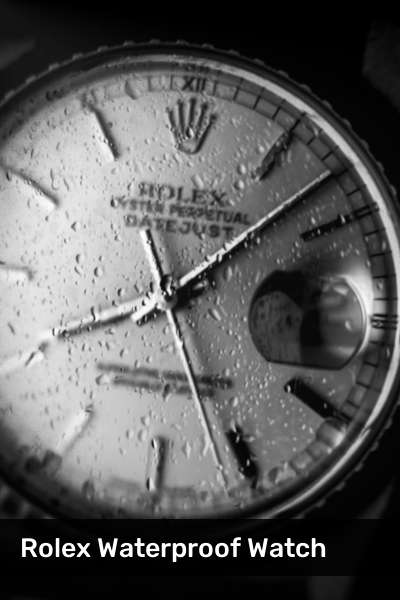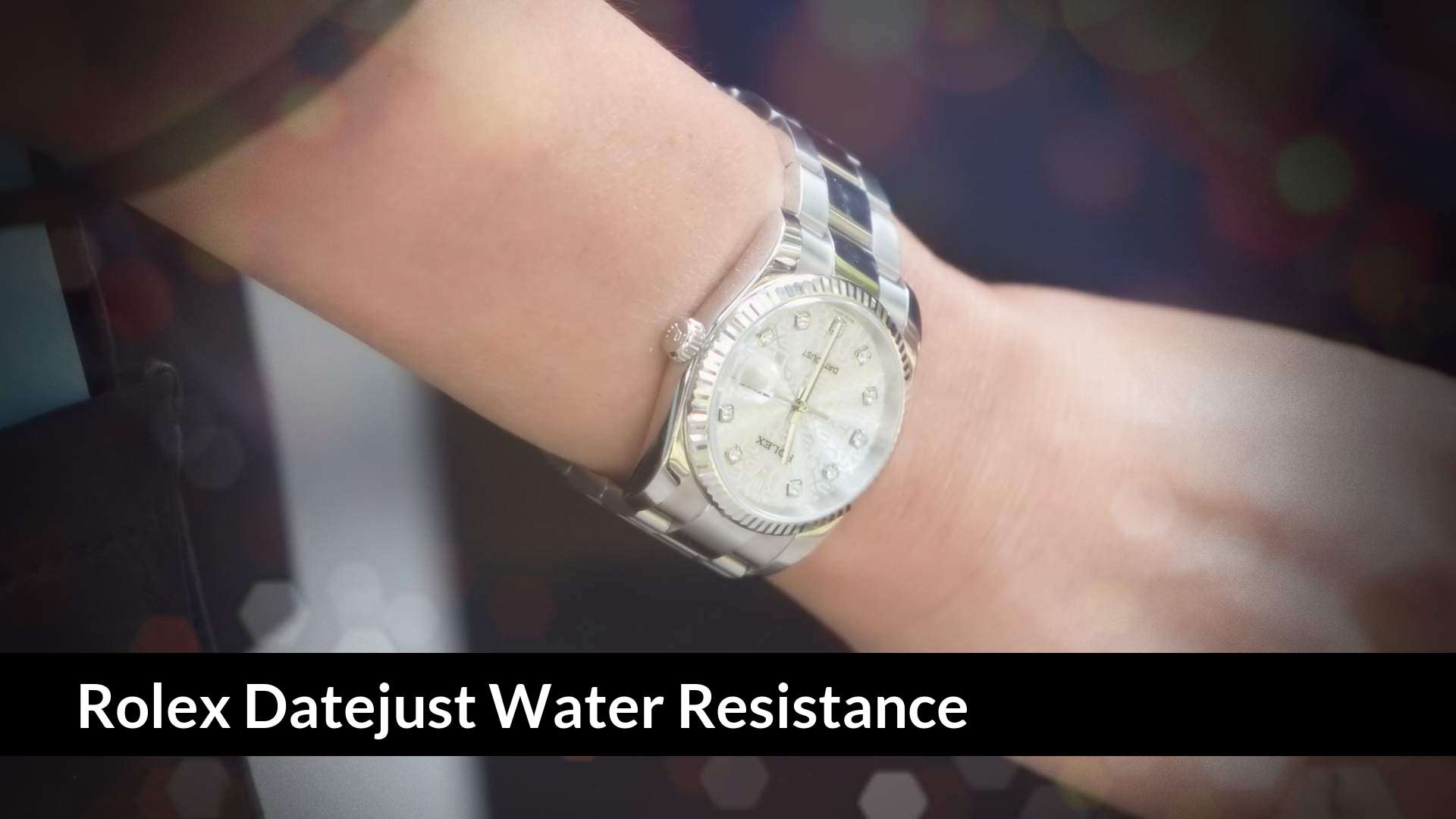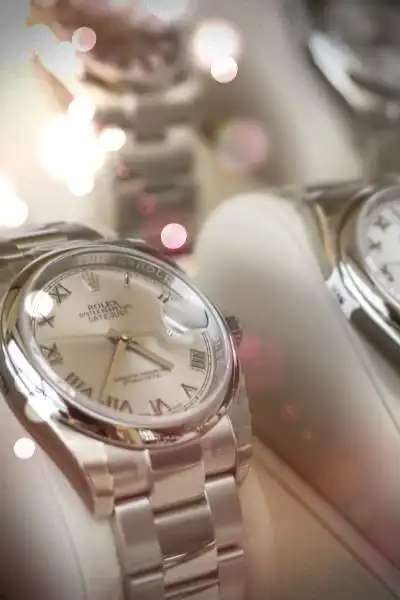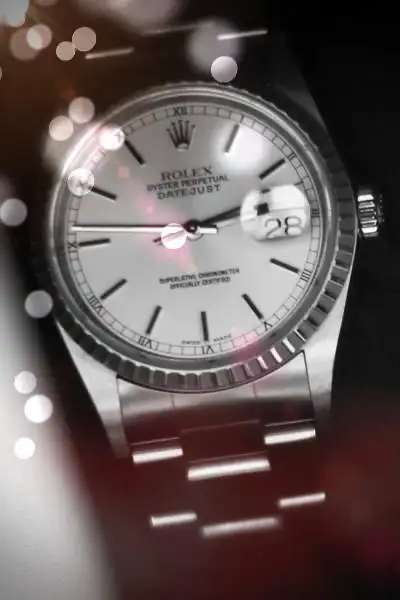Is Rolex Datejust Waterproof?
Rolex Datejust watches are waterproof up to 300ft or 100 meters. Rolex Datejust watches can be worn in the water, and they can be used while swimming, but they should not be worn when diving. Rolex's Submariner timekeeper offers a water resistance of 300m/1000ft - perfect for scuba diving. You can also find our article about Rolex service cost here.


Is A Rolex Datejust Waterproof?
When you are considering purchasing or currently owning a high-end watch such as a Rolex Datejust, you will most likely want to know about water resistance and waterproofness. The Rolex Datejust is a water proof wristwatch with a depth rating of 100 meters. Rolex timekeepers feature water resistance, which is one of their strengths. In this regard, Rolex has continued to improve since creating the first water-resistant watch in 1926.
People Also Ask

Rolex Datejust Water Resistance
The Rolex Oyster model, which he invented, was a major advancement in timekeeper water resistance. The Rolex Oyster wrist watch, which marked a significant advancement in model water resistance, was one of his designs. Water resistance to 300ft or 100 meters is provided by all Rolex Datejust models with the Oyster case.
The wrist watch is made of components that make it waterproof. The Rolex Datejust has a threaded Oyster case that screws down the timepiece's element on the central case, unlike many other brands that employ case backs fastened with screws. To hermetically seal the watch, the Rolex Datejust Oyster case compresses the gaskets. When the case is sealed, the gaskets are compressed, resulting in a higher level of water resistance.
Due to the way they are designed, Rolex Datejust watches can be worn in the water. Hans Wilsdorf, the founder of Rolex, was concerned about the watch's resistance to water and dust. To protect a timepiece movement from moisture and dust, he understood that a dry and airtight case is essential.
Hans Wilsford invented and patented a water resistance watch case called the Oyster in 1926. Modern Rolex Datejust watches are built around the Rolex Oyster case. Like submarine hatches, all of the case's components are threaded and fastened together. To hermetically seal the watch movement inside the case, gaskets seals are installed. The technique is incredibly efficient and outperforms timekeeper casings that are sealed with screws.
The weakest element of water-resistance timepieces has always been the winding crowns. It makes no difference how waterproof the crown stem is if it creates a hole in the case. This opening on the side of the watch casing has proven a challenge for watchmakers. In order to avoid water entry, several watchmakers use a gasket around the crown stem.
A watch's crown stem hole is the soft spot in terms of water resistance. There is a hole in the case edge through which the crown stem connects to the movement. As the crown is rotated, wrapped, and turned to fix the time, the crown seal is repeatedly crushed, chafed, and pressured. You can read more about Datejust Rolex waterproof in our linked article.
Datejust Water Resistance
Datejust is water-resistant thanks to the revolutionary Twinlock mechanism, which outperforms the traditional crown gasket. The crown of the model, which screws into the case, now features a threaded stem crown. Twinlock is a Rolex feature that combines threaded stems with rubber o rings to improve water resistance. Inside and around the crown stem, many gaskets are squeezed.
The crown of a mechanical timepiece, such as a Rolex, must be pushed out and rotated to operate it. Crowned watches are less waterproof than non-crowned wrist watches. These are the areas where water can enter. When the crown is removed from a timekeeper, it becomes non-waterproof. A Rolex can be harmed by moisture and dust. Its crown now offers better water resistance due to its improved design.
The innovative Twinlock screw down crown on these current Rolex Datejust ensures water resistance up to 100m(300ft). Double waterproofness is provided by a Twinlock winding crown on the Rolex Datejust. Two sealed zones are present, one inside the tube and one inside the crown. When the crown is screwed down, the Datejust is guaranteed waterproof to 100 meters or 300 feet depth. When the crown is screwed down, the Twinlock provides better water resistance than many other watches on the market. The Rolex Datejust is resistant to 300ft or 100 meters feet if used properly. Keep in mind, however, that the Rolex Datejust waterproof warranty will require servicing and maintenance throughout the course of the watch's lifetime. We have linked an article about Rolex Daytona market price that visitors can read.

Why Rolex Datejust Is Waterproof
When acquiring or owning an expensive watch like a Rolex Datejust, water resistance and waterproofness are likely key concerns. With the Rolex Datejust timekeeper, waterproof depth is guaranteed up to 100 meters. Water resistance is a significant strength of Rolex timekeepers. With the creation of the first water-resistant timekeeper in 1926, Rolex has continued to improve in this field.
Rolex Datejust wrist watches are water resistant to 100m(300ft). Rolex Datejust watches are suitable for swimming, however they are not ideal for diving. Rolex's Submariner model is water resistant to 300 meters/1000 feet, making it ideal for scuba diving. Read the linked article to gain a better understanding of GMT Master 2 Pepsi price.
Hans Wilsdorf, an early pioneer in waterproof timepieces, founded Rolex. Rolex Oyster watch, his innovation, marked a major improvement in the resistance of models to water. Every Rolex Datejust comes with an Oyster case that protects the watch from water for up to 300ft or 100 meters.
Waterproof components are included in Rolex Datejust watches. Some manufactures utilise screws to secure their casebacks, whereas Rolex uses Oyster cases, which screw the wristwatch element into the central case. The Rolex Datejust Oyster case locks the wristwatch hermetically by squeezing the gaskets. Because the gaskets are compressed, water is repelled more effectively from the casing.
Rolex Datejust can go in the water because of the way they are designed. Hans Wilsdorf, the founder of Rolex, placed a high priority on the wrist watch's resistance to water and dust. To preserve accuracy and endurance, the wristwatch mechanism must be protected from the elements by an airtight housing.
Hans Wilsford invented and patented a water resistance timekeeper case called the Oyster in 1926. The heart of any current Datejust watch is a Rolex Oyster watch casing. It's like a submarine hatch with threads and screws for every part. Gaskets seals are added to the case to seal the wristwatch movement inside hermetically. The system is more efficient than screw-sealed timekeeper casings and seals them better.
Water-resistant watches' winding crowns have always been a weak spot. Even if the case is waterproof, the crown stem will create an opening in it. For watchmakers, the case opening on the side has proven difficult. Water does not penetrate the stem because of the gasket around the crown.
Around the crown stem hole, a model's water resistance is fragile. The stem of the crown is attached to the movement through a hole in the case edge. The crown seal is continually crushed, chafed, and pressured during the continuous rotation, winding, and twisting of the crown.
Rolex Datejust is water-resistant thanks to the revolutionary Twinlock mechanism, which outperforms the traditional crown gasket. An additional threaded stem crown has been added along with the wristwatch's threaded crown that screws into the case. Twinlock is a trademarked device that combines threaded stems to rubber O rings to help them resist water. Multiple gaskets are compressed within and around the crown stem by this mechanism.
Mechanical wrist watches like the Rolex have a crown that needs to pull out and rotated to operate the timepiece. Models that have a weak crown will be less resistant to water. Water can enter the crown stem and tube through a hole. A watch that has the crown pulled out is no longer waterproof. Moisture and dust can cause Rolex watches to break. Rolex has been improving its crown's water resistance for decades.
The innovative Twinlock screw down crown on these current Rolex Datejust ensures water resistance of up to 10 ATM/100m/300ft. Datejust have a Twinlock winding crown featuring a double waterproofness system. In addition to the tube, the crown also features two sealed zones. The Datejust 's crown is guaranteed waterproof to 100 meters when screwed down. When the crown is screwed down, the Twinlock, unlike other watches, delivers exceptional water resistance. The Rolex Datejust is resistant to 100 meters feet if used properly. However, the Rolex Datejust waterproof guarantee will require servicing and maintenance over the course of the wrist watch's lifetime. Read this article about Rolex Explorer service cost if you're a Rolex fan.

Will The Rolex Datejust Watch Remain Consistently Waterproof?
Many people take the water resistance lifetime of Rolex Datejust for granted. Having a water resistance depth level of 100m(300ft) or above is a characteristic that must be maintained and tested on a regular basis. Because Rolex watch owners are unfamiliar with gaskets, many believe their models will remain waterproof even if the rubber gaskets aren't replaced. Some Rolex owners may be disappointed by the error. The gaskets must be kept in excellent working order for the watch to perform correctly and keep its waterproof depth.
The Rolex Datejust gaskets are checked before leaving the Rolex factory in Switzerland. To guarantee the wristwatch is water resistant, Rolex's laboratory stresses both the casing and the gasket seals. The watch is tested beyond the waterproof warranty, but on a superb Rolex Datejust with fresh new gaskets. The gasket seals on a Rolex Datejust wear down with time, making it less water resistant. Time-worn wristwatch rubber seals do not provide the same level of waterproofing as fresh gasket seals. As a Rolex fan, you might enjoy reading this article about when to service Rolex.
The water resistance depends on the condition and accurate placement of the watch gaskets. Rolex gaskets are excellent seals, but they deteriorate over time and require replacement. Impacts can cause gaskets to become dislodged. The rate of degradation of the gasket when the model is used is mostly determined by how it is used. A Rolex Datejust that has been worn while swimming in the sea will be put under more stress than one that has never been exposed to saltwater.
Water-resistant Rolex watches require timekeeper gaskets. There are multiple gaskets around the crystal, the winding crown, and the case back of the Rolex Datejust that prevent water pressure from entering the wristwatch. The gasket's principal job is to keep water out. The strength of the barrier is the water-resistance of the timepiece. We also have an article about Rolex watch price list available for our visitors to read.

Swimming In The Sea With A Rolex Datejust Tips
Verify your Rolex Datejust 's current water resistance rating: If you're planning on swimming with your Rolex Datejust, be sure to check its water resistance periodically. Rolex watches may be checked for water resistance even if they haven't been opened, so the guarantee isn't void. Dry pressure testing is the most effective way for determining waterproofness. Once a year, you should be able to rest certain that your Rolex Datejust is still guaranteed to be waterproof.
If you wear a Rolex in the ocean, clean it with fresh water. Freshwater corrodes and damages a Rolex Datejust significantly less than saltwater. Make sure you thoroughly rinse your Rolex Datejust with freshwater after a dip in the sea. Clean the crown, the bezel, and the case back of any salt or sand deposits. Clean the bracelet and the clasp if necessary. The following article discusses how much is a Rolex watch for fans of Rolex.
Before immersing a Rolex Datejust in water, double-check that the winding crown is well sealed. It is also important to tightly screw the crown onto the case. In order for the Rolex Datejust crown to be waterproof, it must be fully inserted.
Underwater, don't adjust the Rolex Datejust time. When wearing your Rolex Datejust timekeeper underwater, you should avoid unscrewing and opening the crown. Due to the decrease of water resistance, submerged crowns should never be operated or opened when submerged in water.
Avoid extreme changes in temperature when wearing a Rolex Datejust. Rolex Datejust is not suitable for steep changes in temperature. If you've just come out of a sauna, don't take a cold shower while wearing a Rolex Datejust. The casing and the gaskets are placed under a lot of strain when the temperature fluctuates this much. The water resistance of a timekeeper might be compromised.
Don't let harmful chemicals come in contact with your Rolex Datejust. Perfume and soap, for example, can damage or discolour the Rolex Datejust. Contact with aggressive cleaning agents might shorten the life of gaskets. A Rolex Datejust gasket and water resistance can be damaged by prolonged exposure to chlorinated water. In hotel pools and Jacuzzis, chlorine is commonly utilised.
The instruction manual contains Rolex waterproof guidelines. The Rolex Datejust model comes with a user manual that explains how to set it up and use it. You should follow Rolex guidelines, especially the requirements for waterproofing. On our site, there is an informative article about why Rolex Daytona so popular.

When You Wear A Rolex Datejust In Ocean
If your Rolex Datejust is periodically submerged in water, don't panic; just make sure the crown is fully screwed down to the casing. Even though a Rolex Datejust can be worn while swimming, it is an expensive option. The option is to have a more reasonable timepiece that you use for your swimming sessions.
Wearing a Rolex Datejust in the water has a maintenance price tag. The Rolex Datejust is an amazing model that may be worn in the water without a doubt. The Rolex Datejust, on the other hand, is not the most cheap timepiece to wear when swimming. If you wear a Rolex Datejust in the water, you need to have it tested and serviced more often. It's vital to remember that water resistance is a temporary property that will diminish over time. Chemicals are present in swimming pool water, and salted water is corrosive. Both of these characteristics have an impact on the water resistance of the Rolex Datejust. In any case, if the Rolex Datejust is often submerged in water, it should be properly watched. If you do not do so, the model may be damaged by water, and you may not realise it for months. When the water damage becomes visible, your Rolex Datejust will need expensive repairs. There is more information in our article Rolex Submariner repair.
When compared to other model brands that manufacture water resistant wristwatches, Rolex servicing comes at a high price. Repairs at Rolex Service Centers are extremely expensive, especially when a component of the Rolex Datejust needs to be replaced owing to rust inside the model movement. You can budget appropriately now that you know how much swimming with a Rolex Datejust costs.
Always follow the manufacturer's guidelines when wearing Rolex watches. Follow all of Rolex's wristwatch-care instructions. Divers, swimmers, surfers, sailors, and anyone who routinely use wrist watches in water should have their models examined more frequently. Your Rolex timepiece's water resistance may be compromised if you drop it. If you've been in the sea, whether diving or just splashing, you should always rinse your Rolex timekeeper with fresh water.

How Long Does A Rolex Datejust Watch Last?
You can expect a modern Rolex Datejust watch to last a lifetime. If you don't do anything stupid with your watch, like setting the time and date underwater or dropping it from the 50th floor, your Rolex Datejust will likely last for decades. With a Rolex, you are getting an accurate mechanical wristwatch that will last for decades. Even though Rolex recommends service every ten years, it's wise to keep an eye on your timekeeper to ensure it is operating correctly. Rolex watchmakers should be consulted for any performance loss.
Rolex Datejust that are well-maintained will last their owners' whole lives, and occasionally even longer. Multigenerational heirlooms, they are handed down through the generations. Rolex as a company is committed to service and repair their watches long after the model is discontinued.
Instead of recommending that you buy a new watch, the Rolex Service Centre will repair and service Rolex watches from any era. They're built to endure a lifetime without sacrificing accuracy or practicality, and they're fashioned in a timeless aesthetic that will be relevant for decades to come. While a Rolex is hardly necessary in the world of smart watches and cell phones, it is still a fine piece to wear purely for appearance.
A Rolex Datejust watch is more than a marketing phrase; it's a reality backed by a network of watchmakers ready to service and maintain the timepiece for decades to come.

Wearing Rolex Datejust In Shower?
It goes without saying that Rolex Datejust have proved themselves capable of withstanding harsh conditions. The wristwatch should not be subject to nonessential risks, however. If you are going to be showering, you should not shower in your Rolex. Repairing an accidently damaged on Rolex wrist watch is expensive.
The Rolex Datejust is ideal for showering. Rolex Datejust models are water-resistant to 300ft or 100 meters. The water pressure in a normal shower is 3 ATM (30M/100ft). This means the timepiece can be worn while showering. Do you think it's a good idea to shower with a Rolex Datejust?
The Rolex Oyster case makes the wrist watch water resistant to 100m(300ft). Rolex Datejust timekeepers have such good water resistance that you can safely take a shower with them. On the inside the Rolex Datejust is protected with a threaded Twinlock crown and a screw-down back case.
The usual temperature of a shower is 105 degrees Fahrenheit (40 degrees Celsius), and the gaskets in a Rolex Datejust can resist those temperatures without warping. Fluoropolymer is used in Rolex's gaskets. Fluoropolymers can withstand temperatures of up to 500°F (260°C). These materials are outstanding in terms of thermal decomposition resistance.
A watch gasket can be damaged by a chemical cleaner or soap, but only if used in large quantities. Fluoropolymers can interact with other chemical compounds for extended periods of time without causing any noticeable chemical reactions. As a result, they're the best material for watches that need to be resistant to corrosion. That's why Rolex use it.
Fluoropolymer gaskets, unlike standard rubber, are completely waterproof, swelling, and UV radiation damage. In terms of technical aspects, Rolex Datejust timepieces can be used in the shower. In a shower, there is no possibility of injury or damage.
Human error is the most major risk with any model, including the Rolex Datejust. The most significant distinction between a wristwatch and a Rolex Datejust is that abusing a Rolex Datejust will result in substantial repair charges. The crown is usually left unscrewed, implying that the gaskets have not been sealed. A water-resistant Rolex Datejust requires a fully screwed-down crown.
Rolex Datejust watches are mechanical automatic watches that must be wound up and adjusted on a regular basis. In a rush, a single mistake can result in a Rolex Datejust being in the shower with the crown open. If you get water inside your Rolex Datejust, you'll have to pay at least $800 to have it serviced. Moisture within your Rolex can severely damage it if it is not serviced, and the cost of restoration might be more than the purchase of a new Rolex Datejust.
Shower rooms are small places with a lot of hard surfaces. The risk of damaging your Rolex Datejust is high. When shampooing your hair with your eyes closed, it is possible to bang your watch against the shower walls. Showering every day is like putting your valuable Rolex Datejust on the line.
Scratches, dislocated gaskets, and broken or shattered crystals can all occur when Rolex Datejust timepieces collide with a hard surface. The cost of Rolex service begins at $800 and rises to $1200 if the crystal needs to be replaced. When you wear a Rolex Datejust during your shower, you might end up paying a lot more than you'd expect.














































